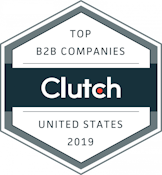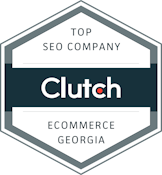Cloudflare vs Perplexity AI Crawling: SEO Challenges Amid New Restrictions
A recent dispute between Cloudflare and Perplexity AI centers on the latter’s crawling practices and their impact on SEO. Cloudflare blocked Perplexity AI’s crawlers, citing deceptive behavior that strains server resources and complicates traffic management. This move reflects a shift in how automated traffic is controlled and raises questions about how AI-driven crawlers affect site visibility and performance. Cloudflare’s introduction of a pay-per-crawl model adds complexity, potentially reshaping how websites handle automated traffic and protect digital assets. Understanding these changes is important for maintaining effective SEO while adapting to new crawling dynamics.

The Conflict and Its SEO Implications
The core issue involves how automated crawlers interact with websites and the resulting strain on servers. Cloudflare’s blocking of Perplexity AI’s crawlers stems from concerns over deceptive crawling tactics, such as disguising automated requests as legitimate browser traffic, rotating IP addresses, and ignoring robots.txt directives. These behaviors complicate traffic management and obscure the true nature of requests, challenging webmasters who must balance allowing beneficial bots with defending against resource-heavy or unauthorized crawlers.
Cloudflare’s pay-per-crawl model introduces a financial element to managing automated traffic. By charging for crawler access, Cloudflare aims to discourage abusive or excessive crawling and help websites recoup costs associated with automated visits. This approach may limit AI tools’ ability to gather data freely, requiring them to prioritize efficient and ethical crawling. SEO strategies must adapt to these restrictions, considering how crawler limitations affect indexing and ranking.
When crawlers are blocked or limited, search engines and AI tools may face delays in accessing fresh content, which can reduce organic visibility. Webmasters should monitor crawler activity closely and engage with service providers to maintain access for beneficial bots. Transparency about crawler identity and behavior will become increasingly important as automated traffic grows more complex.
Technical and Ethical Dimensions of Crawling Behavior
Cloudflare’s experiments with honeytrap sites revealed that Perplexity AI accessed data it should not have, raising concerns about website owners’ control over their content. The difficulty lies in distinguishing between genuine user-initiated requests and automated crawling when AI assistants mimic human browsing patterns.
Perplexity AI argues that its data fetching occurs in real time, triggered by user queries rather than preemptive crawling. This distinction challenges whether AI tools should follow the same rules as traditional crawlers, which systematically index content without direct user interaction. The debate highlights issues of consent, transparency, and the feasibility of enforcing existing web standards against sophisticated AI systems.
For SEO professionals, this means reconsidering how crawler behavior is monitored and managed, especially as AI-driven tools blur the lines between automated indexing and interactive content retrieval.
Managing Automated Traffic and SEO Strategy Adjustments
Cloudflare’s blocking of Perplexity AI’s crawlers and the pay-per-crawl model signal a more active approach to managing automated traffic, with financial incentives to reduce abusive crawling. This shift could limit the free flow of information that many SEO strategies depend on for timely indexing and ranking.
Website owners must now navigate crawler access as both a technical and cost issue, requiring closer collaboration with service providers and a deeper understanding of crawler identities and behaviors. The evolving relationship between Cloudflare and Perplexity AI illustrates how SEO increasingly intersects with security policies and the economics of web traffic management.
Frequently Asked Questions About Cloudflare vs Perplexity AI Crawling and SEO
How does blocking Perplexity AI’s crawlers affect indexing?
Blocking these crawlers can delay the discovery of new or updated content by AI tools relying on real-time data fetching, potentially reducing organic visibility for sites that depend on rapid indexing.
Why has Perplexity AI’s crawling behavior drawn scrutiny?
Unlike traditional crawlers, Perplexity AI fetches data dynamically in response to user queries, resembling human browsing. This blurs lines with standard crawling rules like robots.txt, complicating enforcement and server resource management.
What impact does Cloudflare’s pay-per-crawl model have on SEO budgets?
Charging for crawler visits may discourage excessive crawling but could also limit data collection by AI tools without incurring costs. Website owners and SEO teams need to evaluate the value of crawler traffic and possibly negotiate terms with providers.
How will transparency and crawler identification evolve?
Clear communication between website operators and AI services about crawling intentions and behaviors is essential. Transparent crawler identification and respect for site owners’ preferences will help maintain healthy SEO outcomes as AI tools become more sophisticated.
Conclusion
Balancing the needs of AI-driven tools like Perplexity AI with the security and resource concerns of platforms like Cloudflare presents a complex challenge for SEO and web management. As stricter crawling policies and pay-per-crawl models take effect, website owners and SEO professionals must monitor crawler behavior, prioritize transparency, and reassess how automated traffic impacts site performance and indexing. Ongoing collaboration between technology providers and webmasters will be essential to align AI innovations with effective site protection and sustainable SEO strategies.
For more details, read the original article on Search Engine Land.
As noted by the original article’s author, “Cloudflare’s blocking of Perplexity AI’s crawlers stems from concerns over deceptive crawling tactics, such as disguising automated requests as legitimate browser traffic, rotating IP addresses, and ignoring robots.txt directives.”













.png)

